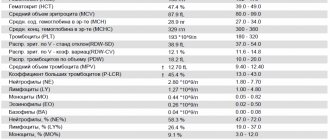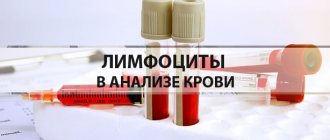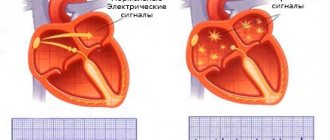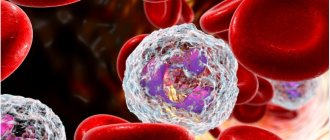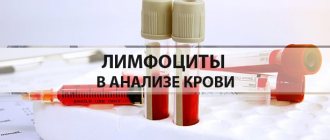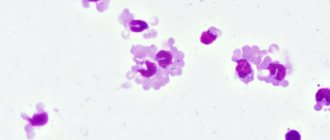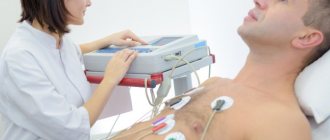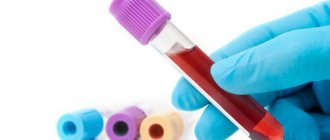(When placing an order in the first half of the current day)
Home → Pulse oximeters → Pulse oximeters - oxygen norm in adults and children
Home (12) Professional (5) Children's (3) Finger (16) Wrist (16) With verification (16) Portable (16) Stationary (16) ARMED (2) ChioceMMed (5) All pulse oximeters (16)
The normal values of pulse oximeters correspond to the values of blood oxygenation and pulse rate in a healthy person.
Pulse oximeters: blood oxygen saturation rate and heart rate
In medicine, saturation is the amount of oxygen contained in the blood, or more precisely, the percentage of oxyhemoglobin to hemoglobin. The norms for measuring saturation (SpO2) with a pulse oximeter are 96-98%. A decrease in this indicator to a level of less than 94% indicates disorders in the body, and a SpO2 value less than 90% is a signal for taking urgent action and oxygen therapy. Causes of falling oxygen levels in the blood:
- disruption of lung function and insufficient oxygen supply from the air;
- decrease in the amount of hemoglobin in red blood cells;
- pathologies of cardiac activity.
During the measurement, the pulse oximeter records changes in the volume of blood vessels corresponding to pulse impulses. Usually there are 60-90 pulse beats per minute. If the heart rate is higher, this may indicate hypertension, neurological disorders, oncology, heart disease, etc. A slower pulse can signal hypotension, stomach ulcers, hypothyroidism, and heart attack.
Pulse oximeters: norms for children and adults
The age of the patient plays a significant role when performing pulse oximetry.
Adult and children's standards for oxygen levels in the blood and heart rate are different. Newborns have little iron in their bodies and their lungs are not yet developed. Therefore, in infants, the SpO2 value fluctuates between 92 and 95%, and this is not a consequence of pathology. And in premature babies, saturation can be reduced to 82%. But such children are provided with artificial ventilation immediately after birth in order to maintain the oxygen supply to the body at the proper level.
The heart rate in the first weeks after birth averages 135 beats per minute. As you grow older, this figure decreases and by the age of 15 the average number of pulse beats per minute is 77.
You can get normal pulse oximeter readings if they are not affected by:
- movement, shaking;
- bright lighting;
- severe anemia;
- vascular spasm;
- arrhythmia.
All pulse oximeter models on the market accurately determine SpO2 and heart rate. Absolute accuracy is impossible; all instruments have an acceptable error. So, for Armed pulse oximeters it is 2-3% for saturation and 1 beat per minute for pulse rate. Such devices and similar portable models that are worn on the finger make it possible to fairly objectively assess the condition of the patient’s body. [td]
When oxygen levels drop
As doctors note, a drop in blood oxygen saturation can be observed in various pathologies. Today, one of the main diseases for which blood oxygen levels are monitored is coronavirus. However, there are other pathologies that reduce saturation.
“We can note a decrease in saturation in diseases of the respiratory system such as pneumonia, bronchial asthma, bronchitis, lung cancer and various other non-inflammatory lung lesions;
for diseases associated with a decrease in blood hemoglobin, which is responsible for the transfer of oxygen in the blood (for example, with anemia) and for various defects of the cardiovascular system,” lists Elena Dolgikh.
In addition, the specialist notes, a decrease in oxygen levels can be diagnosed in very obese people. Excess weight becomes a serious burden for the body, from which the cardiovascular and respiratory systems suffer the most. A person loses the ability to breathe deeply, which causes hypoventilation. If fat surrounds the lungs, then they cannot be fully filled with air during breathing. At night, the situation may worsen due to relaxation of the body.
“Smokers also need to monitor their oxygen levels. If a smoker’s saturation level is measured for the first time and it turns out to be low, then it is necessary to conduct examinations (smokers are more susceptible to diseases of the bronchopulmonary system). After ruling out all diseases, we will understand that this patient’s saturation level is normal,” explains Elena Dolgikh.
Special attention should be paid to reducing saturation during physical activity. “During physical activity, there may be a decrease in oxygen concentration in the blood. But this will be the norm, since during active physical activity the body does not have time to be saturated with oxygen in the required amount. However, upon transition to a resting state, oxygen saturation is restored,” says Elena Dolgikh.
How often should healthy people check their saturation? More details
COVID-19 and pulse oximetry at home
COVID-19 and pulse oximetry at home: how to get correct saturation results?
Currently, there is a sharp rise in the incidence of COVID-19: this is felt by both outpatient clinics and hospitals. One of the main issues that must be resolved at the outpatient stage of medical care is how not to miss the deterioration of the condition of a person who has contracted a coronavirus infection.
This is especially significant when monitoring patients who are traditionally at risk for complicated and severe COVID-19:
1) persons over 65 years of age
2) patients with chronic concomitant pathology (especially diabetes mellitus, oncohematology, serious diseases of the cardiovascular and pulmonary systems, chronic renal failure, liver cirrhosis, drug immunosuppression - taking cytostatics, glucocorticosteroids, etc.).
3) overweight persons (a body mass index of 30 or more already increases the risk of severe COVID-19!)
Recently, devices for assessing hemoglobin oxygen saturation—pulse oximeters—have become significantly cheaper and have become available to the population.
Key points for their correct use to identify developing respiratory failure and promptly seek medical help.
- A portable pulse oximeter (clip-on pulse oximeter) consists of a sensor and a display and runs on a battery. To perform the measurement, the sensor is placed on the patient's finger.
- How it works: Pulse oximeter sensors have light-emitting diodes that illuminate tissue with two types of red light. A sensitive element on the opposite side detects light passing through the tissue and, based on its characteristics, determines what kind of hemoglobin is contained in the pulsating (arterial) blood. The pulse oximeter display shows the SpO2 saturation value (percentage of hemoglobin saturation with oxygen) as a percentage, the heart rate value, as well as the pulse wave, which determines the blood flow itself.
- It is important to follow certain principles in order to obtain correct saturation measurement results:
— correctly position the sensor on the finger (usually choose the index, middle or ring finger; the sensor should fit snugly to the nail bed, but not squeeze the finger too much);
— if varnish is applied to the nail plate, it is optimal to remove it (otherwise there may be errors in saturation measurement);
— if you doubt the correctness of the pulse oximeter readings in a sick person, first measure the saturation in a healthy person;
— to correctly measure saturation, the pulse wave on the display of the pulse oximeter must be clearly visible, its waves ideally look the same after the same period of time;
— the hands of the patient whose saturation is measured should not be cold (otherwise they must be warmed);
— while measuring saturation, the hand should not move.
- Normally, the saturation value for an adult should be above 95% . But even here there are exceptions. For example, patients with chronic obstructive pulmonary disease and some other diseases may initially have low saturation values. Therefore, it is important for them to fix the initial saturation value at the onset of the disease and then monitor its changes during the treatment process.
- In a patient with COVID-19, it is optimal to assess saturation at least 3 times a day (every 8 hours). A single low saturation value (<94%) is often a consequence of incorrect measurement or the temporary influence of some factor that changes pulse oximetry readings. Therefore, it is important to recheck this indicator over time after a few minutes, using the other hand. If the saturation indicator upon repeated measurement also turns out to be low or continues to decrease to an even greater extent, we seek medical help. , a heart rate above 120 per minute are “ red flags ” , usually requiring hospitalization .
- It is necessary to especially carefully monitor the value of saturation in patients at risk for severe and complicated COVID-19, starting from the 5th day of illness. The same should be done in patients without the risk factors listed above, including young age, but for a long time (more than 5–7 days) maintaining a fever above 38.0–39.0 * C, poorly reduced by antipyretic drugs, and with pronounced manifestations of intoxication ( severe weakness, weakness, headaches, dizziness, muscle pain, etc.).
- If a patient with COVID-19 is seen at the clinic/hospital emergency department level and sent home for treatment, saturation and pulse monitoring should continue at home. Thus, one study in the UK showed that if a patient with coronavirus infection sent home, when assessed at rest, developed a tachycardia above 120 beats per minute or saturation less than 92%, he needed to be readmitted to the hospital (Gootenberg D et al., BMJ Health Care Inform, 2021).
- Fitness trackers and smartwatches, even from well-known manufacturers, despite the ability to assess blood oxygen saturation, are generally not intended for medical use. You should not trust their readings too much in a patient with COVID-19, as diagnostic errors are possible.
Thus, pulse oximetry, in addition to clinical patient assessment, may be an effective tool for early identification of deteriorating COVID-19 patients in the outpatient setting.
Below are images of stationary pulse oximeter sensors, as well as the type of pulse wave and key indicators - saturation and heart rate displayed on the pulse oximeter display.
Source of information: Nikita Solovey · View on Medium
A breath of life How to prevent oxygen starvation during quarantine
During general self-isolation, in order to stay healthy, you need to carefully monitor the condition of your body. Even if infection is avoided, there may be other problems associated with prolonged indoor exposure. One of the important indicators is SpO2, or blood oxygen saturation (saturation). When it decreases, hypoxemia occurs, a potentially dangerous condition that can lead to chronic diseases. However, there are already simple technologies for measuring SpO2, which are found, for example, in smart watches.
Blood oxygen saturation measures the amount of oxygen bound to hemoglobin in red blood cells - red blood cells. Hemoglobin with oxygen is called oxyhemoglobin, and without it is called deoxyhemoglobin.
Oxygen is needed to provide cells with energy for life, so its stable level in the blood is very important. The body itself maintains balance. Red blood cells collect oxygen in the lungs and distribute it to all tissues of the body, and in return carry away carbon dioxide from them. During exercise and mental activity, the body requires more oxygen than usual.
There are several ways to measure saturation. Doctors determine the oxygen saturation of arterial hemoglobin. To do this, a sample of blood taken from an artery is placed in a special device. Another, simpler method is pulse oximetry, which assesses blood oxygen saturation in peripheral tissues. The function of determining SpO2 in smart watches is based on a similar principle.
In normal life, the level of blood oxygen saturation in healthy people reaches 96-99 percent. In any case, it must be greater than 94 percent. At altitudes above 1,600 meters - where the thin mountain air contains less oxygen - the lower limit of saturation drops to 92 percent.
Photo: Huawei
Normally, the heart pumps about five liters of blood per minute, delivering about a liter of dissolved oxygen to the tissues. If less oxygen is supplied, or it occurs more slowly, hypoxemia may develop. For example, prolonged exposure to a stuffy or poorly ventilated area can cause blood oxygen saturation to drop below 90 percent, causing headaches, dizziness, shortness of breath and rapid heartbeat. During self-isolation and quarantine, hypoxemia risks becoming chronic. A person gets tired faster, drowsiness occurs, and mental performance decreases.
“The main reason for these problems is that organizing air exchange at home is voluntary, and the public’s awareness of how to do it correctly leaves much to be desired,” says cardiologist Andrei Rozhkov, leading specialist at the Semeynaya network of medical clinics. According to the doctor, factors such as heating and intensively working household appliances lead to dry air. In addition, families are now confined to apartments, which also reduces the volume of fresh air, and therefore the level of oxygen in it.
Chronic hypoxemia does not always manifest itself openly - a person may not even suspect that his body is suffering from a prolonged lack of oxygen. However, under stress or due to any illness, the symptoms of hypoxemia intensify: coughing attacks and confusion may appear. In addition, the load on the circulatory and respiratory systems increases, pulmonary hypertension and overload of the right ventricle of the heart occur - this is not far from chronic cardiovascular problems. In children, oxygen deficiency causes delays in physical development and sleep disturbances.
Since it is quite difficult to detect a chronic form of hypoxemia, frequent monitoring of the level of oxygen in the blood is required. According to Andrei Rozhkov, people who do not have any complaints about their health do not need to measure their oxygen levels. Constant monitoring is relevant during quarantine, when we are forced to spend a lot of time indoors, faced with symptoms such as shortness of breath, rapid shallow breathing and heart palpitations. If SpO2 is low, you should ventilate the room more often, take breaks from work, avoid overwork, increasing the flow of fresh air to the lungs.
To avoid acute or chronic hypoxemia, you need to change your lifestyle. Firstly, eat right and ensure the body receives vitamins: the condition of blood vessels and blood cells depends on this. It is necessary to do warm-up and breathing exercises in a well-ventilated area. Since many people are unable to walk amid the pandemic, rooms should be ventilated as often as possible. It is imperative to provide an influx of fresh air before going to bed so that there is no feeling of stuffiness and dryness.
According to Andrei Rozhkov, the suitable temperature for an apartment is 18-23 degrees Celsius (16-21 degrees Celsius is recommended abroad), and humidity is 45-60 percent. “While awake, there should be 10-15 minutes of ventilation for every hour,” the cardiologist recommends. — Before going to bed, it is advisable to ventilate the rooms with special intensity so that the temperature is at 16-18 degrees. It is worth noting that through ventilation is preferable when air movement is most intense. To humidify the apartment, you can carry out wet cleaning or use air humidifiers.”
Photo: Pavel Tkachuk
The process of restoring performance and physical activity after quarantine should be gradual. There is no need to suddenly change your daily routine and diet, as this can lead to overwork. “At work, you should take short breaks for physical exercise, and outside of work, try to spend more time in the fresh air,” says the doctor. — There is a big risk of losing all your energy and not getting into a normal working rhythm. In the first days after quarantine, it is better to take on the simplest and least important tasks.”
For long-term SpO2 monitoring, mountain climbers, professional athletes, and light aircraft pilots—those who are more likely to suffer from oxygen deprivation due to altitude or physical activity—typically use a pulse oximeter. This is a small device with LEDs that is worn on the finger and shines through the tissue, determining the color of the blood and its oxygen saturation.
Pulse oximetry is convenient, the results are shown almost instantly. But, despite the simplicity of the method, there are several nuances. “Measurements may not be accurate if nail polish (or false nails) or even cream are applied. In addition, it is advisable to keep your hands warm before measuring; the device must be put on your finger exactly as indicated in the instructions, and keep your hand motionless,” warns Andrey Rozhkov.
A more accessible and simpler way of testing is the infrared sensor in the Huawei Watch GT 2 series smartwatches. This function first appeared in the Watch GT 2e, a model for young people and sports enthusiasts. But now the entire GT 2 line of smartwatches supports blood oxygen level measurement. Like a pulse oximeter, the smartwatch sensor does not require blood sampling and laboratory tests; its operating principle is based on the absorption of light by hemoglobin. The user only needs to put on the watch, press it tightly to his hand, point the screen vertically upward and select the appropriate menu item, after which the data will appear on the screen. Smart watches allow you to constantly monitor the level of blood saturation and prevent hypoxemia.
The content of oxyhemoglobin may change, so a more informative picture requires long-term and regular monitoring of SpO2. It should be measured at different times of the day, during physical exercise, and mental work. Huawei Watch GT 2 allows you to track other important health indicators, including heart rate, stress levels and sleep quality in real time. Together with SpO2 monitoring, smart watches can provide detailed information about the state of the body and prevent unwanted disruptions in its functioning.
